Wind Turbine Maintenance
Inspecting the condition of wind turbines is vital at various stages of the project lifecycle. It needs routine maintenance to keep it spinning safely and efficiently.
Treated right, wind turbines will provide safe and reliable operation throughout its lifecycle. The life of a wind turbine can be quite uncertain, the blades; made of laminated materials, such as fiberglass, carbon fiber, balsa wood, and composites, can reach speeds up to 180 miles per hour at the tip. It means even small particles in the air can cause damage to the surfaces. It is most likely no surprise that lightning is a serious hazard for wind turbines as well.
Damaged blades are at risk to humidity invasion, which can quickly lead to additional damage as a result of thaw/freeze cycling. Leading edge erosion and deteriorating gel coats can drastically reduce the lifespan of a blade and cause performance losses.
Visual inspections are an essential preventive maintenance task for such expensive assets. Finding minor issues before time allows small repairs to be made prior to more extensive damage results. Technicians often make use of rope access techniques to complete the checks and carry out minor repairs. For those of us who do not particularly like heights, the idea of sailing down a wind turbine blade on ropes from the nacelle is scary, but for K2 Energy Group personnel who perform such sort of work, it is just another day on the job.
Blades
They are possibly the most important element of every wind turbine and need to be examined closely at regular intervals.
The leading edge of the blades gets a significant amount of abuse as a result of dust, hail, rain, and bugs in the air. These should be visually inspected for erosion, and repaired when possible if required. Aftermarket skins can provide extra-durable shield to the leading edge if the turbine is in an area with a lot of dust or bugs.
Any cracks in the blade are considered very serious. A crack under load could quickly fail during high winds and lead to disastrous damage to the wind turbine, tower, and adjacent buildings as well.
Blade accessories such as vortex generators are frequently knocked loose by adhesive failure, birds, or ice, and can be replaced by cleaning the spot and gluing another in place. Broken blades can be repaired or replaced, based on the amount of the damage.
Weather Can Be a Show Stopper
For even the most daring technician, however, there are times when the work just can’t be carried out. Humidity, temperature, rain, and wind can all have an effect of the capability of finishing blade repair & maintenance as planned. In some climates, up to forty percent of all canceled wind turbine maintenance days are the direct result of unfavorable weather conditions.
Different Techniques to Inspect Wind Turbine Blades
The course of action you should take when it comes to blade inspection and repair on any wind turbine depends on various factors. Once these have been discussed, you will be capable of recognizing the most efficient course of action.
Drone Inspection
Drone inspection is usually the first port of call, it offers a fast effective visual or thermo graphic image of the condition of the components. AI (automated inspections) can identify defects using machine learning which further reduces the timeframe for inspection from manual drone inspection.
Dust, salt, rain, lighting, snow, and hair are just some of the things that the components of a wind turbine must bear. Making use of drone inspection solution for visual Inspection of onshore and offshore wind turbines provides advantages, including:
- Preventive maintenance planning
- Dynamic surveying
- Access to otherwise inaccessible areas
- High quality images and video
- Lessened downtime
- Safe working environment
In contrast to conventional telephotography or other manual Inspection techniques, a drone examination is an efficient and cost-effective inspection technique. With a drone inspection solution, you can get both thermal and visual images on wind turbines for on-site study and evaluation regarding the state of the rotor blades.
On-site Rotor Blade Inspection
At the time of an on-site inspection, the investigation team will fly the drone to the required position for data capture and begin the assessment of the rotor blade, whether it is for a complete checkup or particular areas of the rotor blade. The data is stored, making on-site assessment of the condition of the wind turbine possible. The drone flies stable in the air and can deal with a wind speed of both offshore and onshore wind turbines.
Rope Access
Generally rope access is required for close visual – identification and generation of a repair plan, the professional and experienced K2 Energy Group blade repair and certified rope access technicians can access and assess those turbines that necessitate a closer look. This is a very highly skilled profession where rope access and blade repair training is needed. Our personnel are all GWO approved for BST and blade repairs.
When to call for a professional help
Call K2 Energy Group if something does not seem right during the inspection. Our specialists are capable of checking and repairing any blade damage to the required standard. If maintaining the turbine is a problem, professional technicians are specially trained and capable of safely climbing the tower and servicing the wind turbine.
At K2 Energy group., we always make use of the best in class, the most advanced techniques and technologies to carry out wind turbine blade inspections and repairs. We have a team of certified, professionals, and experienced technicians who are knowledgeable enough to deal with any type of problem in the wind turbine. We always offer the best and the most effective solution, tailored made for the job – with or without a drone.

